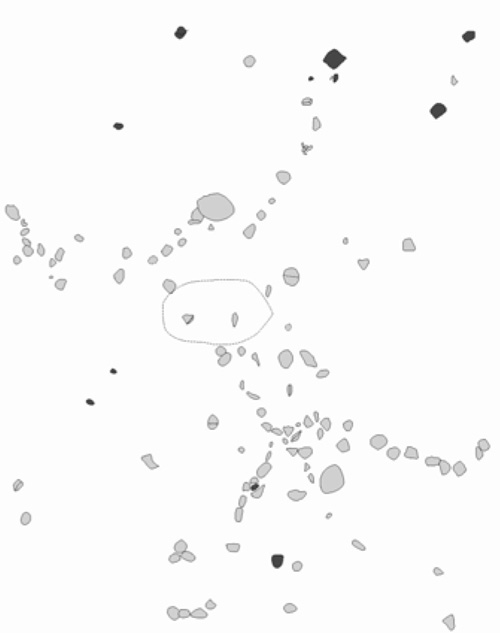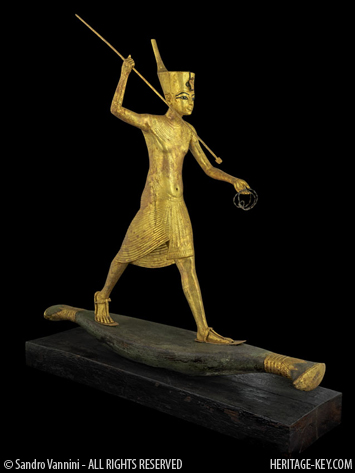 A stone effigy monument, in the shape of a Blackfoot creator god named Napi, has been discovered in southern Alberta south of the Red Deer River near the hamlet of Finnegan.
A stone effigy monument, in the shape of a Blackfoot creator god named Napi, has been discovered in southern Alberta south of the Red Deer River near the hamlet of Finnegan.
One day Old Man determined that he would make a woman and a child; so he formed them both the woman and the child, her son of clay. After he had moulded the clay in human shape, he said to the clay, “You must be people …
They walked down to the river with their Maker, and then he told them that his name was Na’pi, – Old Man.
-From Blackfoot Lodge Tales, George Grinnell, 1892
The Blackfoot are a people that have inhabited the prairies since ancient times. The effigy dates to somewhere between AD 1000 and AD 1500. It would have been constructed before the time of European contact.
Napi is a deity credited with creating the Blackfoot people and the landscape they inhabit. According to Blackfoot tradition hes like the creator, said archaeologist Meaghan Porter, who investigated the site.
She said that the imageis made out of rocks and its in the outline of a man it has arms and a torso, head and legs as well as genitalia. Itsroughly five meters by five meters long. Therocks are about the size of a fist, they have a mix of black, grey and tan colours. Porter doesn’t think these colours were chosen deliberately I think thats just the rocks that were available,shesaid.
Some of the rocks have been fire-broken. This means that they have a red color and are fractured apart and jagged. They look like this because someone, back in antiquity, exposed them to heat whether this was done for religious reasons is unknown. Im not entirely sure, said Porter, again, it could just be that those were the rocks available.
Only nine stone effigies like this have been documented in all of Alberta.
Why was it created?
Archaeologists have found other sites near the area. One of them is a camp, located about one kilometre away, which is about 400 meters by 400 meters in size. Archaeologists found bone remains, hearths, more fire broken rock and even obsidian material that comes from a volcano.
My hypothesis currently is that this Napi effigy (is) kind of a central focal point for other sites the area is significant, said Porter.
Blackfoot stories mention effigies like this. In 1892 anthropologist George Grinnell published a story about Napi, that he –
Made the Milk River (the Teton) and crossed it, and, being tired, went up on a little hill and lay down to rest. As he lay on his back, stretched out on the ground, with arms extended, he marked himself out with stones,–the shape of his body, head, legs, arms, and everything. There you can see those rocks today.
A vulnerable site
The site is quite vulnerable. Sadly some of the rocks had already been moved from their original location by thetime the effigy was documented.
Themonument could easily be destroyed if more of the rocks were moved. As such the team has been cautious about not releasing information or pictures that will give away its precise location. They did release a diagram that shows what the site looks like its pictured here. Porter also published an article about the find in the journal Alberta Archaeological Review and discussed the work at the 2010 Canadian Archaeological Association annual meeting.
The person who reported this find, a rancher, is also very protective of the site. He was concerned that energy development in the area might affect it. The ranchers grandparents, who homesteaded in the area told him to watch over the effigy, wrote Porter in her journal article. The energy company, EnCana, decided to stop development and even agreed to finance the mapping and study of the site. It is now protected under Alberta heritage law.






